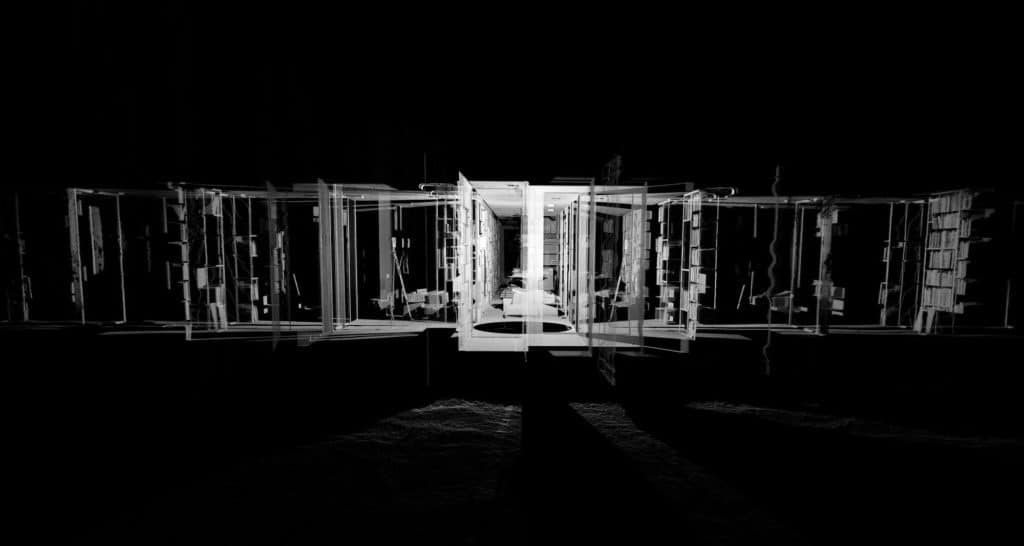Library of Babel
Scanning the library at Shatwell Farm
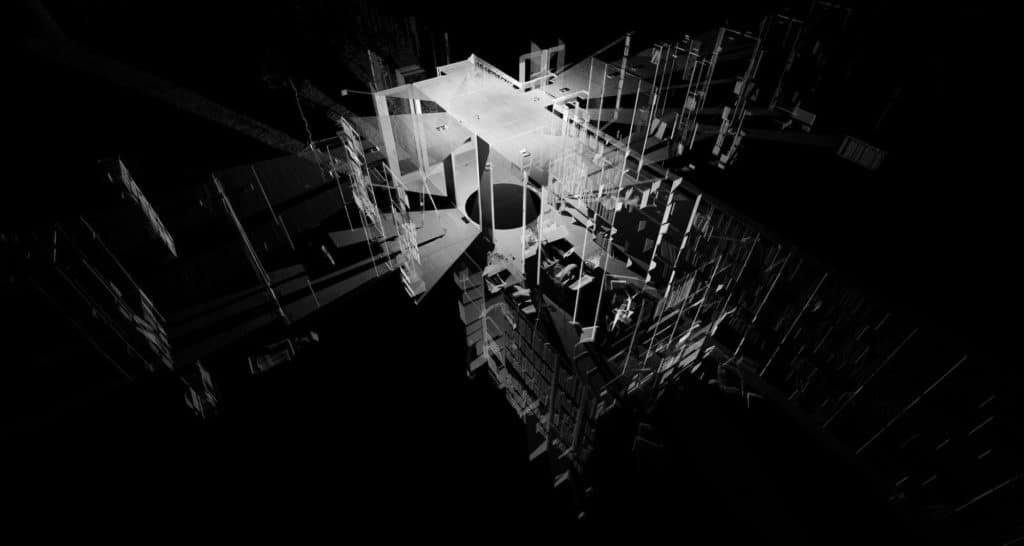
In its most rudimentary form, a LIDAR scan is a simple act of call and response. Thousands of beams of light leave the scanner and receive a measurement based on the distance and intensity (essentially a value of reflectivity) of the objects they collide with. The fascination in these scans comes from the confusion, chaos and complexity that materialises from this simple act. From a library no bigger than a shipping container, the world begins to extend – from the viewpoint of the 3D scanner, Jorge Luis Borges’ Library of Babel is constructed.
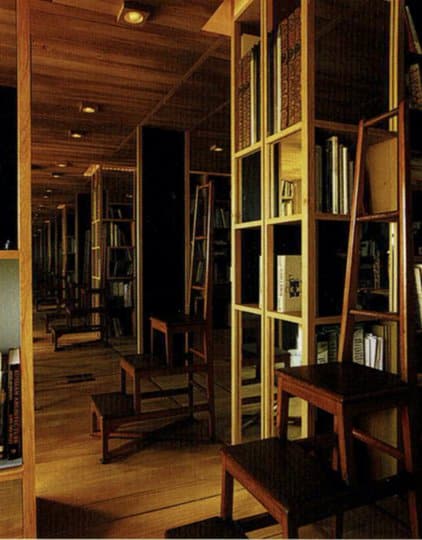
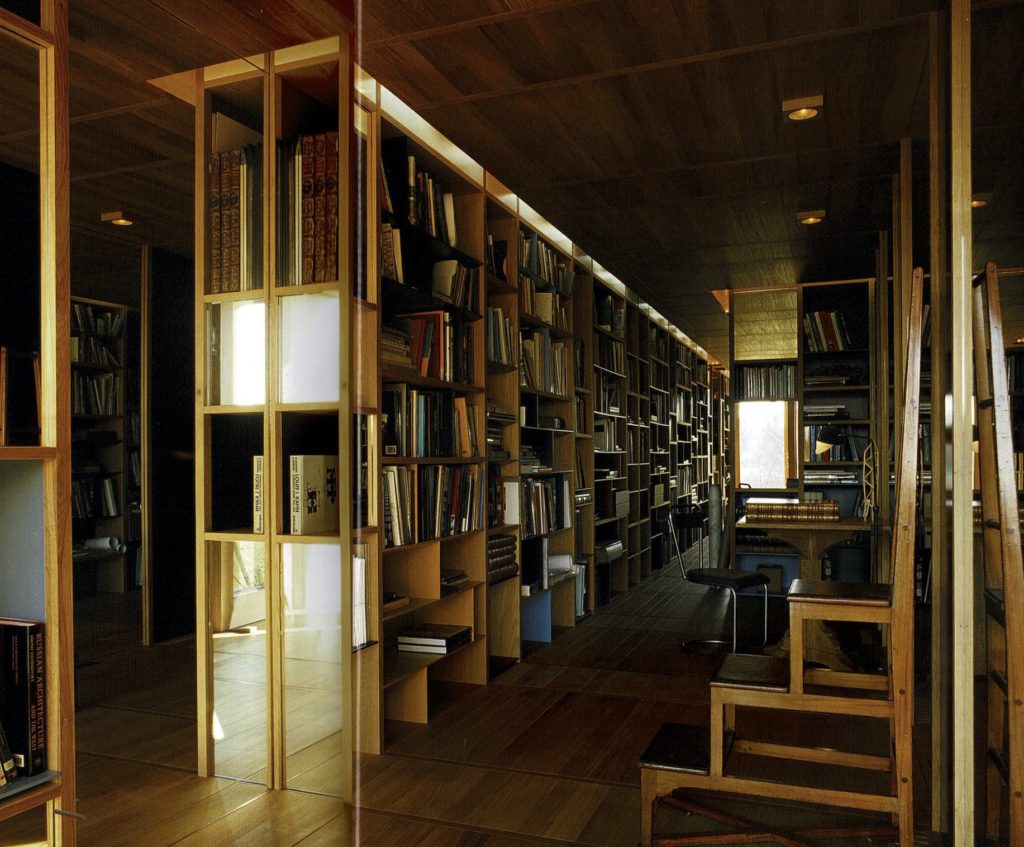
While operating a LIDAR scanner in one of the library containers at Shatwell Farm, I unknowingly became an expert in navigating Euclidean space and self-perception, recognising the series of mirrors inserted between the bookshelves designed to extend the library beyond its spatial bounds. For the rudimentary LIDAR equipment, however, these same mirrors presented a dilemma: to the scanner, the illusion of space produced by the mirrors is a reality. As a result, the scanner created replications upon replications of the same space, physically extending the library in virtual space, recording the real and illusionary in the same point cloud.
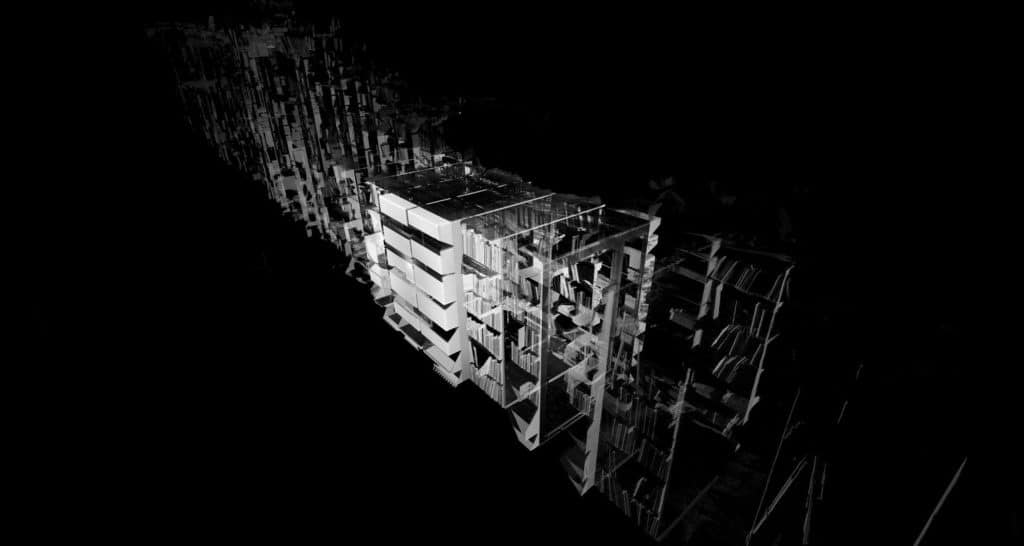
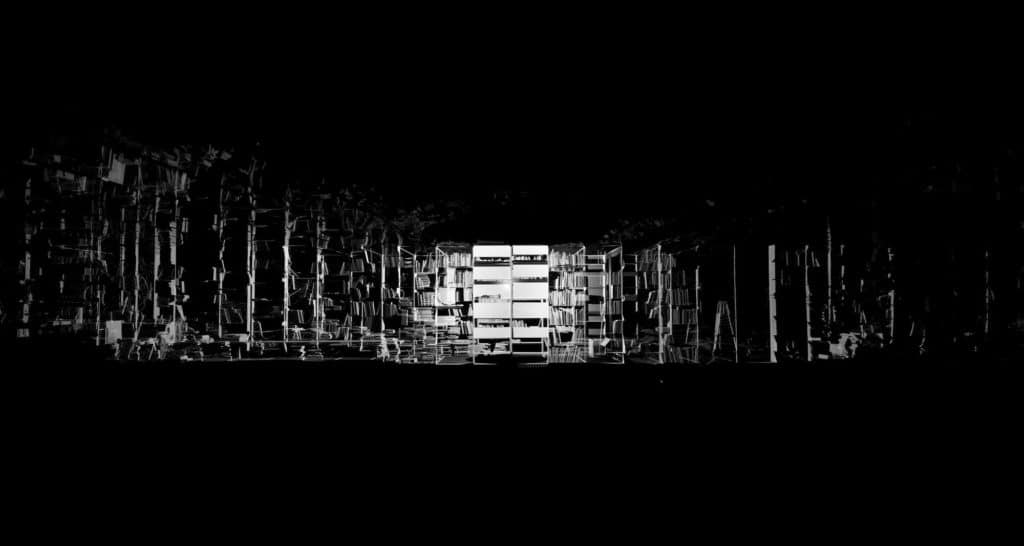
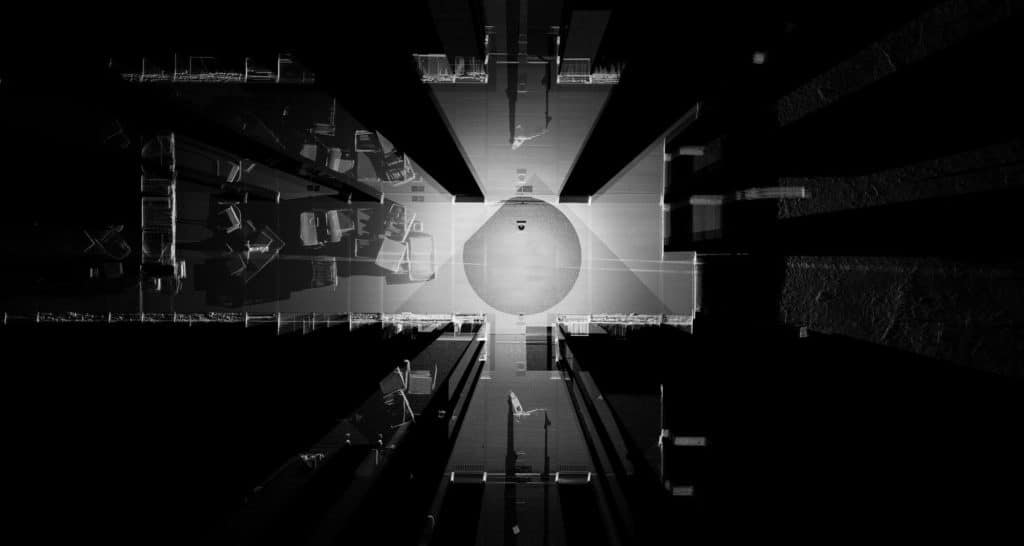
It is not just mirrors that create problems for LIDAR scanners. Water is almost unrecordable due to refraction, and the combination of reflection and refraction in glass causes point clouds to be filled with noise around every window, drinking glass and screen, This creates problems for the accurate recording of the space and the production of imagery, but once removed from the constraints of practicality, the 3D scanner becomes a tool for exploring spaces beyond what we recognise.
LIDAR is becoming an increasingly present technology in everyday life. Apple’s newest iPad and most self-driving cars all use the technology. In light of this, one could ponder what the wider implications of a device that can create space beyond what we know, and one could even posit that LIDAR sensing equipment could begin to create a new world which we cannot begin to perceive. A world in which replications based on reflections cause our digital perception of the world to morph, contort and distort past our point of recognition. But for myself and others, the interest in LIDAR scanning is not merely accuracy, but rather how two co-existent and completely different worlds are created from the same vantage point, through two different lenses: the scanner and operator.
The library of 5000 architectural books at Shatwell is housed in two converted shipping containers, a project developed from 2002 in discussion with Cedric Price. By the introduction of mirrors and sky lighting, Price imagined the confined internal space offering the illusion of a great monastic library. The LIDAR scans illustrated here were undertaken by James White and Bartlett Unit 24 during a visit to Shatwell in 2018.
